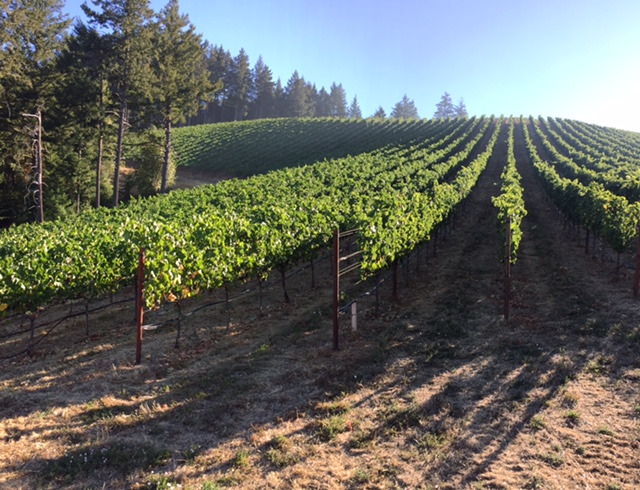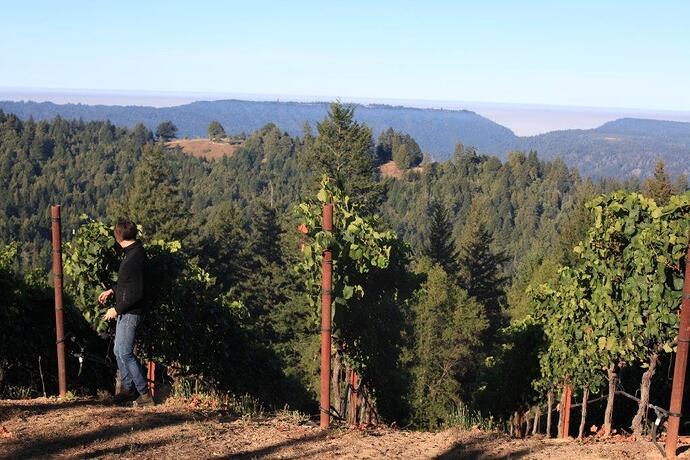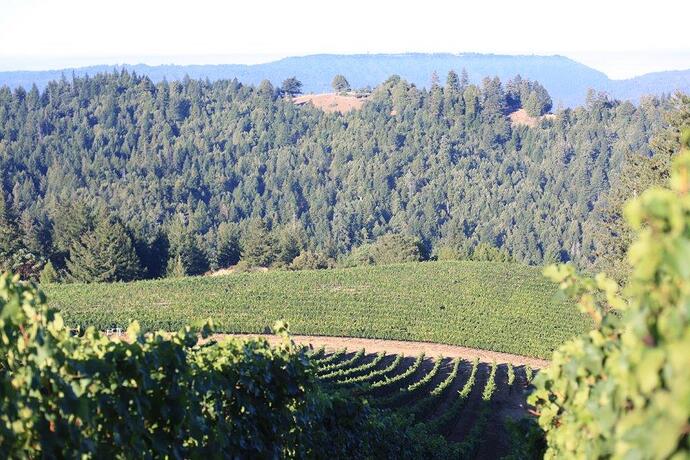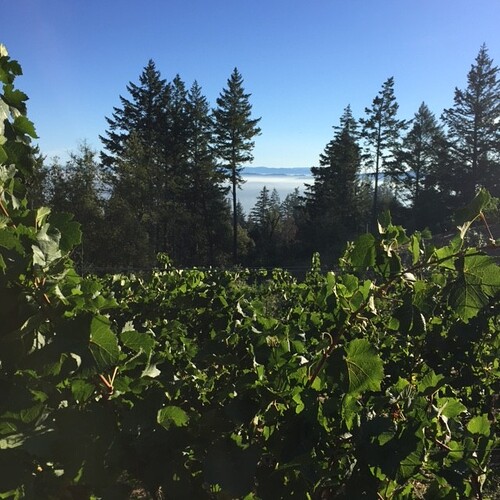As a producer who purchases fruit, I have often felt that it will take a lifetime to find special and unique vineyards whereby I can call all the shots and shepherd the grapes as I see fit. Today, after 11 years of working with dozens of sites in numerous appellations, it’s rare that one touches me in a way that I instantaneously know that they are unique and unlike any other with regards to geology, chemistry, climate, soil and so on. It’s even rarer that I get a crack at working with the fruit.
Well one such vineyard came to be recently and while this might sound like a commercial post, it’s written as passionately as can be written and done so to share my incredible excitement and story which is hard to do with just a keyboard, during harvest.
Tonight while browsing the board I was enjoying a thread about the Deep end of Anderson Valley and the use of Everyvine.com In the last few years I have used that site in conjunction with Google Earth and USGS (United States Geological Survey) while trying to find great, untapped vineyards.
A few years back, I attempted to put together a short list of vineyards that I wanted to try and source fruit from.
My initial check list was as follows:
- Look for vineyards planted to Pinot Noir.
- Elevation must be in excess of 1000 feet.
- Vineyard can’t already be main-stream and sourced by peers. Must be unique.
- Soils MUST be different than that of what I already am working with at Falstaff (Goldridge) and McDougall (Graywacke Sandstone)
- Fruit must be available or be sold and not owned by a corporation.
- Must be within driving distance to sample grapes and return to the winery in the same day.
From this list and with the use of all three website, I came up with just one vineyard that met the criteria and it was located in the Mendocino Ridge Appellation:
For those who don’t know anything about the Mendocino Ridge AVA, it’s fascinating. Here is what Wikipedia says:
The Mendocino Ridge AVA is essentially a northern extension of the true Sonoma Coast. However, the Mendocino Ridge AVA designation is unique in that it is limited by elevation, reserved only for vineyards at or above 1200 feet. This is why the Mendocino Ridge AVA has been nicknamed “Islands in the Sky,” because the vineyards sitting at 1200 feet or higher are often perched above thick fog moving inland from the Pacific Ocean blanketing the coast and the valleys between the ridge tops, making the tips of the mountains look like islands protruding from a sea of fog.
Here is what Rusty, from the Pinotfile has previously written about the AVA:
“The climate of Mendocino Ridge AVA is different from Anderson Valley. Perched above the fog and frost threat, the vineyards bask in the early morning sun, and early afternoon maritime breezes cool down the fruit, never allowing temperatures to rise as high as the Anderson Valley floor. The winds have an added plus of drying out the soils after rains. The diurnal variation during the growing season is significantly less than the Anderson Valley (20 degrees versus 40-50 degrees for Anderson Valley), and > daytime high temperatures are often 10 degrees cooler than in the Anderson Valley. > There is enough rainfall (40” or more annually) and ground water to > dry farm vineyards> . Like the true Sonoma Coast, yields are small in large part due to the extremes of spring weather. Bud break tends to be early, but the shoots grow very slowly due to the consistent coolness, and harvest arrives at the end of September or later. > The soils of the Mendocino Ridge are unique > “timber” type, and since the vineyards are located at the top of ridges, > they are well drained> . In contrast, the soils of the Anderson Valley are deep alluvial in type and in the nearby Yorkville AVA, upland range type. Because of the high elevations of Mendocino Ridge vineyards, > soils are of meager depth leading to smaller berries, thicker skins, and lower yields compared to Anderson Valley> . In general, the tannins are more prominent in wines from the higher elevations in the Mendocino Ridge. Jason Drew told me that the wines from Mendocino Ridge typically have a > noticeable minerality > which he referred to as a character analogous to “chewing on granite.” > Bright acidity is a common feature.> ”
Other cool facts: the Mendocino Ridge appellation is 70% smaller in terms of plantings than the Santa Cruz Mountain AVA with only 17 planted vineyards totaling 237 acres planted. It’s tiny!
The vineyard I have begun sourcing Pinot Noir from is called Signal Ridge and it’s planted 8 miles south of Kiser, deeper in the deep end / closer to the Pacific. As the crow flies, it’s 8.5 miles from the Pacific whereas the deep end vineyards sit at 10+. Beyond that, they couldn’t be more different sites yet still in the same neighborhood. Most of Anderson Valley sits at low elevation while Signal Ridge sits at 2,800 feet (the same elevation as Montebello). At that elevation, Signal Ridge takes the award as the highest elevation vineyard in all of Mendocino and Sonoma County. It snowed in the vineyard two winters ago and to this day, the ridge is still used during lightening storms to scout for fires across the county (hence it’s name). The soils are unique and different than anything else planted in Anderson Valley on a complex called the Garcia-Snook-Gube complex. Looking out towards the Pacific when standing in the vineyard, you can see a direct shot to the Pacific and that influence chills the vineyard down massively and keeps it cooler than Anderson by a dozen degrees during the daytime. Because of that, the acid retention is astonishing. The pH and TA numbers to brix we have been picking numerous clones at are unlike anything I have seen before. I am gushing with excitement and can’t wait to watch these barrels grow older and share them with many. Time will tell, my hopes are high and my gut tells me that this is one special piece of dirt.
Here are a few pictures I took over the last 2 weeks. The vineyard is planted on a 75% slope and the V you see in the distance, is the Pacific Ocean. A direct shot with no protection.




